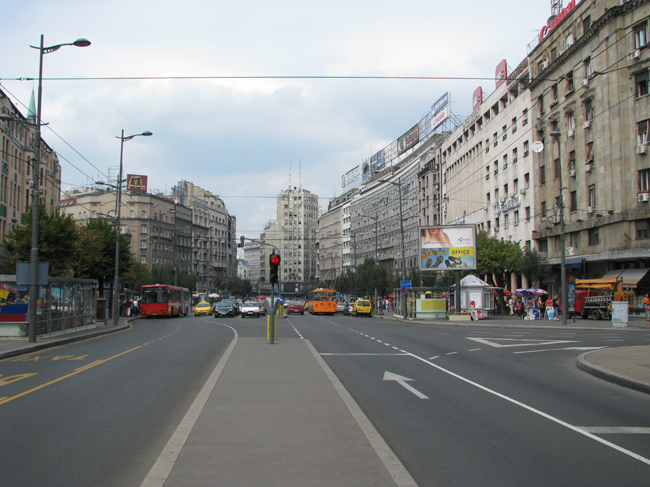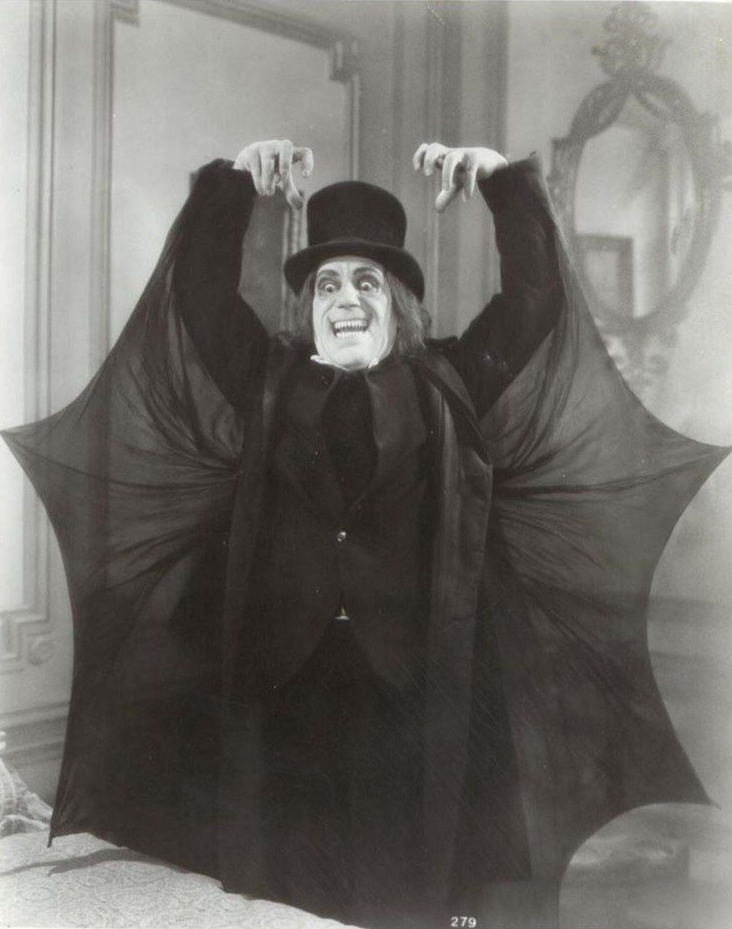|
Svetozar Botorić
Svetozar Botorić ( sr-Cyrl, Светозар Боторић; 1857–1916) was a Serbian entrepreneur and film producer. He was the owner of Serbia's first movie theatre, the Paris Cinema, located inside the eponymous Hotel Paris, at Belgrade's Terazije Square, which opened in December 1908. Unlike many of his contemporaries, Botorić was convinced that film could be turned into a profitable endeavour. In 1909, he signed a contract with the French cinematographic firm Pathé, becoming their representative in Serbia and Bulgaria. In this capacity, he held exclusive Balkan premieres of Pathé's films in his hotel. Botorić also regularly produced newsreels about local events on Pathé's behalf, with the firm providing filming equipment and a cameraman ( Louis de Beéry), and Botorić giving them a share of his admission profits. In 1911, Botorić teamed up with the prominent stage actor Ilija Stanojević to establish the Union for the Production of Serbian Films ( sr, Udruženje za sni ... [...More Info...] [...Related Items...] OR: [Wikipedia] [Google] [Baidu] |
Kingdom Of Serbia
The Kingdom of Serbia ( sr-cyr, Краљевина Србија, Kraljevina Srbija) was a country located in the Balkans which was created when the ruler of the Principality of Serbia, Milan I, was proclaimed king in 1882. Since 1817, the Principality was ruled by the Obrenović dynasty (replaced by the Karađorđević dynasty for a short time). The Principality, under the suzerainty of the Ottoman Empire, ''de facto'' achieved full independence when the last Ottoman troops left Belgrade in 1867. The Congress of Berlin in 1878 recognized the formal independence of the Principality of Serbia, and in its composition Nišava, Pirot, Toplica and Vranje districts entered the South part of Serbia. In 1882, Serbia was elevated to the status of a kingdom, maintaining a foreign policy friendly to Austria-Hungary. Between 1912 and 1913, Serbia greatly enlarged its territory through engagement in the First and Second Balkan Wars— Sandžak-Raška, Kosovo Vilayet and Vardar Macedonia ... [...More Info...] [...Related Items...] OR: [Wikipedia] [Google] [Baidu] |
Terazije
Terazije ( sr-Cyrl, Теразијe) is the central town square and the surrounding neighborhood of Belgrade, Serbia. It is located in the municipality of Stari Grad. Today, Terazije has primarily function of the main transit square, surrounded by the important public buildings, cultural institutions, hotels, public monuments and parks. Though not classically shaped square, Terazije was historically important as the gathering spot and the former business and commercial center of Belgrade. With the Knez Mihailova Street, which extends to the northeast connecting directly Terazije and Belgrade Fortress, the square is one of the oldest and most recognizable ambience units of Belgrade. Due to its historical and cultural importance, Terazije was declared a protected spatial cultural-historical unit in January 2020. Location Despite the fact that many Belgraders consider the Republic Square or Kalemegdan to be the city's centerpiece areas, Terazije is Belgrade's designated center. ... [...More Info...] [...Related Items...] OR: [Wikipedia] [Google] [Baidu] |
Pathé
Pathé or Pathé Frères (, styled as PATHÉ!) is the name of various French people, French businesses that were founded and originally run by the Pathé Brothers of France starting in 1896. In the early 1900s, Pathé became the world's largest film equipment and production company, as well as a major producer of phonograph records. In 1908, Pathé invented the newsreel that was shown in cinemas before a feature film. Pathé is a major film production and distribution company, owning a number of cinema chains through its subsidiary Les Cinémas Pathé Gaumont and television networks across Europe. It is the second-oldest operating film company behind Gaumont Film Company, which was established in 1895. History The company was founded as Société Pathé Frères (Pathé Brothers Company) in Paris, France on 28 September 1896, by the four brothers Charles Pathé, Charles, Émile, Théophile and Jacques Pathé. During the first part of the 20th century, Pathé became the large ... [...More Info...] [...Related Items...] OR: [Wikipedia] [Google] [Baidu] |
Louis De Beéry
Lajos Zoltan Árpád Pitrolf (born 13 October 1879), known professionally as Louis de Beéry, was a Hungarian cinematographer who was active in the Balkans in the early 20th century. In 1909, his employees, the French cinematographic firm Pathé, offered his services to their business partner, the Serbian entrepreneur and movie theatre owner Svetozar Botorić, who had express interest in producing films of his own. In 1911, de Beéry worked as the cinematographer on ''The Life and Deeds of the Immortal Leader Karađorđe ''The Life and Deeds of the Immortal Leader Karađorđe'' (), or simply ''Karađorđe'' ( sr-Cyrl, Карађорђе, link=no), is a 1911 Serbian silent film directed by Ilija Stanojević and starring Milorad Petrović. It was the first fea ...'', the first feature film released in Serbia and the Balkans. References {{DEFAULTSORT:Beery, Louis de 1879 births Hungarian cinematographers Year of death missing ... [...More Info...] [...Related Items...] OR: [Wikipedia] [Google] [Baidu] |
Ilija Stanojević
Ilija Stanojević ( sr-Cyrl, Илија Станојевић; 7 August 1859 – 8 August 1930) was one of the most prominent Serbian actors of the early 20th century. In 1911, Stanojević co-founded the Union for the Production of Serbian Films ( sr, Udruženje za snimanje srpskih filmova, italics=yes) with Svetozar Botorić. The same year, he directed and acted in ''The Life and Deeds of the Immortal Leader Karađorđe ''The Life and Deeds of the Immortal Leader Karađorđe'' (), or simply ''Karađorđe'' ( sr-Cyrl, Карађорђе, link=no), is a 1911 Serbian silent film directed by Ilija Stanojević and starring Milorad Petrović. It was the first fea ...'', the first Serbian feature film, which Botorić produced. Stanojević also helped write the film's screenplay. After making the film, Stanojević returned to the stage, and remained a theatrical performer for the remainder of his career. References {{DEFAULTSORT:Stanojevic, Ilija 20th-century Serbian male ... [...More Info...] [...Related Items...] OR: [Wikipedia] [Google] [Baidu] |
The Life And Deeds Of The Immortal Leader Karađorđe
''The Life and Deeds of the Immortal Leader Karađorđe'' (), or simply ''Karađorđe'' ( sr-Cyrl, Карађорђе, link=no), is a 1911 Serbian silent film directed by Ilija Stanojević and starring Milorad Petrović. It was the first feature film released in Serbia and the Balkans. Petrović portrays the eponymous rebel leader Karađorđe, who led the First Serbian Uprising of 1804–1813. ''Karađorđe'' was first conceived by the aspiring film producer Svetozar Botorić, the owner of Serbia's first cinema. Following an unsuccessful attempt to secure government funding for the project, Botorić decided to personally finance the film. Actors from the National Theatre were cast in the leading roles. Botorić had worked with a cinematographer, Louis de Beéry, in the past for filming newsreels, and used him again. Principal photography ran through July and August 1911, and took place in and around Belgrade. The film was well received following its Belgrade premiere in ... [...More Info...] [...Related Items...] OR: [Wikipedia] [Google] [Baidu] |
Lost Film
A lost film is a feature or short film that no longer exists in any studio archive, private collection, public archive or the U.S. Library of Congress. Conditions During most of the 20th century, U.S. copyright law required at least one copy of every American film to be deposited at the Library of Congress at the time of copyright registration, but the Librarian of Congress was not required to retain those copies: "Under the provisions of the act of March 4, 1909, authority is granted for the return to the claimant of copyright of such copyright deposits as are not required by the Library." A report created by Library of Congress film historian and archivist David Pierce claims: * 75% of original silent-era films have perished. * 14% of the 10,919 silent films released by major studios exist in their original 35 mm or other formats. * 11% survive only in full-length foreign versions or film formats of lesser image quality. Of the American sound films made from 1927 to 1 ... [...More Info...] [...Related Items...] OR: [Wikipedia] [Google] [Baidu] |
1857 Births
Events January–March * January 1 – The biggest Estonian newspaper, ''Postimees'', is established by Johann Voldemar Jannsen. * January 7 – The partly French-owned London General Omnibus Company begins operating. * January 9 – The 7.9 Fort Tejon earthquake shakes Central and Southern California, with a maximum Mercalli intensity of IX (''Violent''). * January 24 – The University of Calcutta is established in Calcutta, as the first multidisciplinary modern university in South Asia. The University of Bombay is also established in Bombay, British India, this year. * February 3 – The National Deaf Mute College (later renamed Gallaudet University) is established in Washington, D.C., becoming the first school for the advanced education of the deaf. * February 5 – The Federal Constitution of the United Mexican States is promulgated. * March – The Austrian garrison leaves Bucharest. * March 3 ** France and the United Kingdom for ... [...More Info...] [...Related Items...] OR: [Wikipedia] [Google] [Baidu] |
1916 Deaths
Events Below, the events of the First World War have the "WWI" prefix. January * January 1 – The British Royal Army Medical Corps carries out the first successful blood transfusion, using blood that had been stored and cooled. * January 9 – WWI: Gallipoli Campaign: The last British troops are evacuated from Gallipoli, as the Ottoman Empire prevails over a joint British and French operation to capture Constantinople. * January 10 – WWI: Erzurum Offensive: Russia defeats the Ottoman Empire. * January 12 – The Gilbert and Ellice Islands Colony, part of the British Empire, is established in present-day Tuvalu and Kiribati. * January 13 – WWI: Battle of Wadi: Ottoman Empire forces defeat the British, during the Mesopotamian campaign in modern-day Iraq. * January 29 – WWI: Paris is bombed by German zeppelins. * January 31 – WWI: An attack is planned on Verdun, France. February * February 9 – 6.00 p.m. – Tristan Tz ... [...More Info...] [...Related Items...] OR: [Wikipedia] [Google] [Baidu] |
Film People From Belgrade
A film also called a movie, motion picture, moving picture, picture, photoplay or (slang) flick is a work of visual art that simulates experiences and otherwise communicates ideas, stories, perceptions, feelings, beauty, or atmosphere through the use of moving images. These images are generally accompanied by sound and, more rarely, other sensory stimulations. The word "cinema", short for cinematography, is often used to refer to filmmaking and the film industry, and to the art form that is the result of it. Recording and transmission of film The moving images of a film are created by photographing actual scenes with a motion-picture camera, by photographing drawings or miniature models using traditional animation techniques, by means of CGI and computer animation, or by a combination of some or all of these techniques, and other visual effects. Before the introduction of digital production, series of still images were recorded on a strip of chemically sensitized ... [...More Info...] [...Related Items...] OR: [Wikipedia] [Google] [Baidu] |







